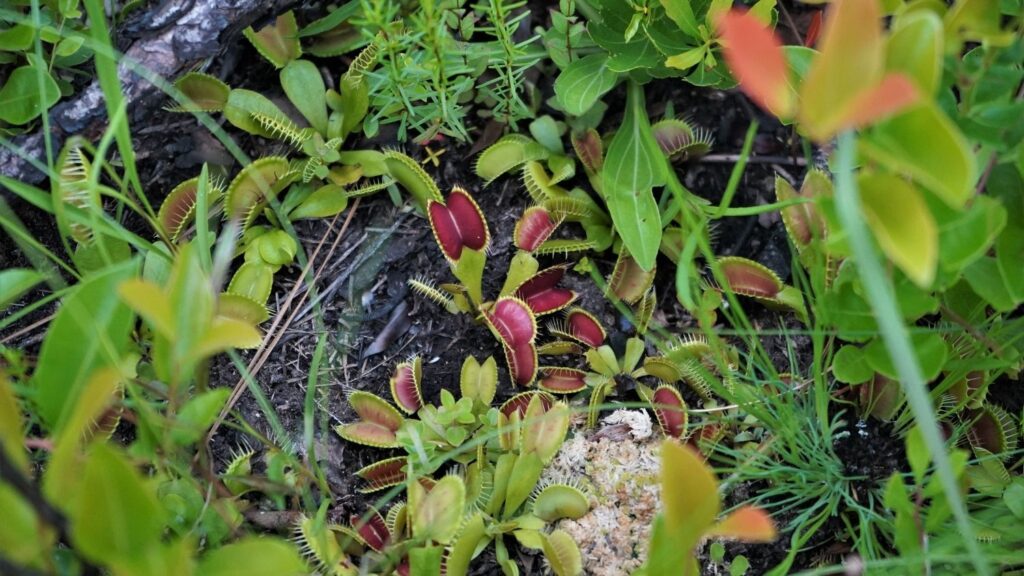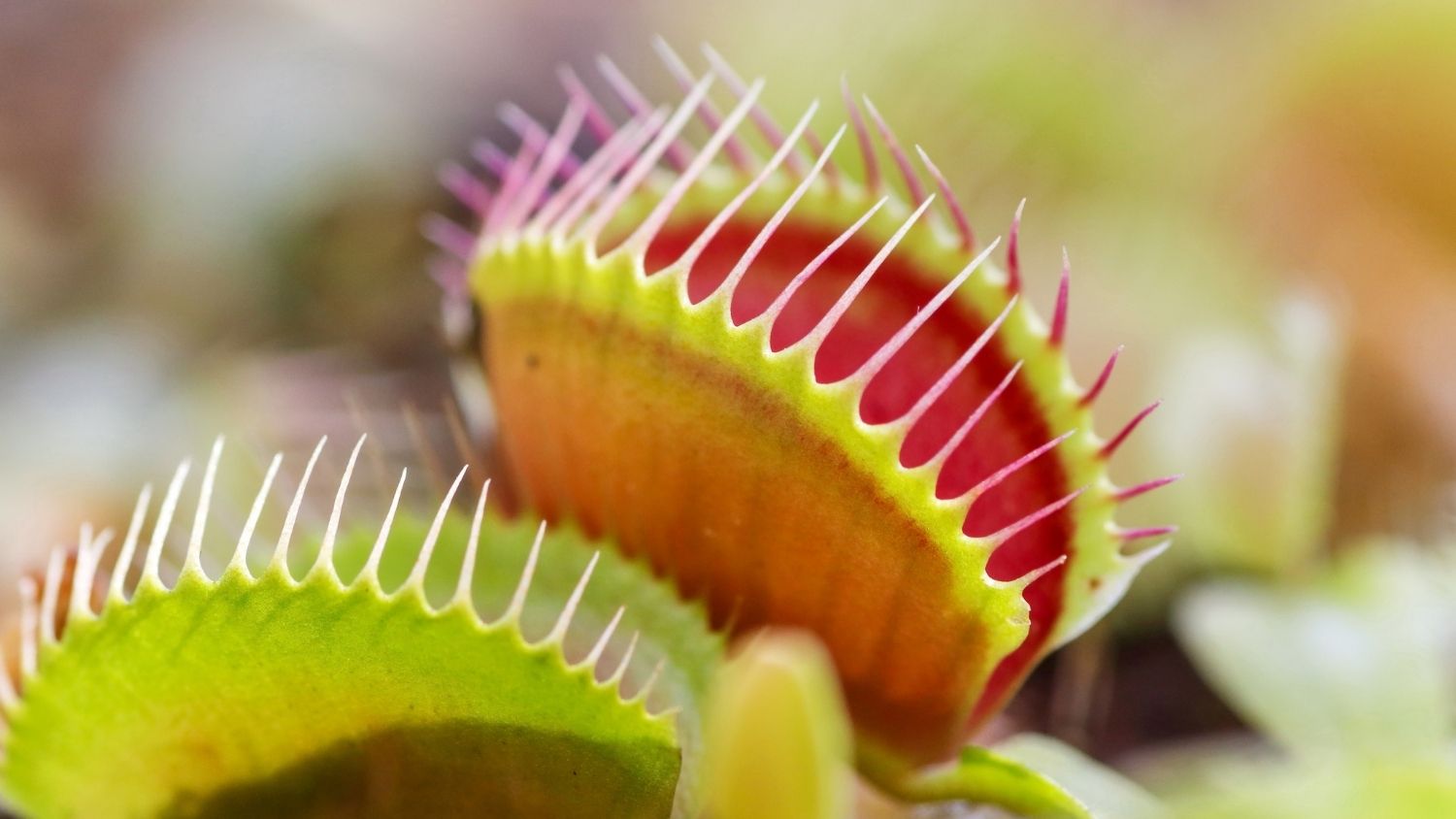Venus flytraps are perennial, carnivorous plants that can live up to 20 years in the wild. While most of their energy is obtained through photosynthesis, insects provide nutrients that aren’t readily available in the soil.
We reached out to Steph Jeffries, associate teaching professor in the Department of Forestry and Environmental Resources, to learn more about this fascinating plant.
1. They are native only to North and South Carolina.
While Venus flytraps have been planted and naturalized in other areas, they only occur naturally within a 75-mile radius around Wilmington, North Carolina. This area is primarily in North Carolina, but it also includes a few South Carolina counties.
2. The Venus flytrap is the only species in its genus.
For this reason, it’s called a monotypic genus. “It used to be in its own family, too, Dionaeaceae,” said Jeffries. However, taxonomists have recently decided it’s closely related to sundews, making it part of the Droseraceae family.
3. They don’t waste energy on false alarms.
The “traps” are two-lobed leaves with hair-like extensions for sensing prey. They’ll only close if two hairs are touched in succession, within seconds of each other. This way, the plants don’t close for false alarms. “No need to expend energy on a random bit of debris or a raindrop,” said Jeffries. When the traps do close, digestive juices are released to break down the insect inside.

4. They rarely trap their pollinators.
Venus flytraps consume insects, but this doesn’t mean they trap their pollinators. NC State scientists Elsa Youngsteadt, assistant professor of applied ecology, and Clyde Sorenson, professor of entomology, collaborated with other conservation scientists to study this issue.
The researchers found that the flowers sit six to 10 inches above the trap-like leaves, which are close to the ground. The plants are pollinated by flying insects, but they mostly consume crawling insects.
5. Their greatest threat is habitat loss.
“Venus flytraps live in the wet, open longleaf pine savannas, which need frequent fires to keep the stands open,” said Jeffries. Without frequent fire, trees and shrubs begin to grow in these habitats, blocking smaller plants like the Venus flytrap from the sun they need. On top of this, longleaf pine forests only occupy 3% of their former extensive range throughout the Coastal Plain.
Poaching is also a problem, and Venus flytraps are considered a “Species of Special Concern” in North Carolina. While it has always been illegal to poach them, a change in state laws made it a felony in 2014. However, Venus flytraps still lack the protection of threatened and endangered species.



